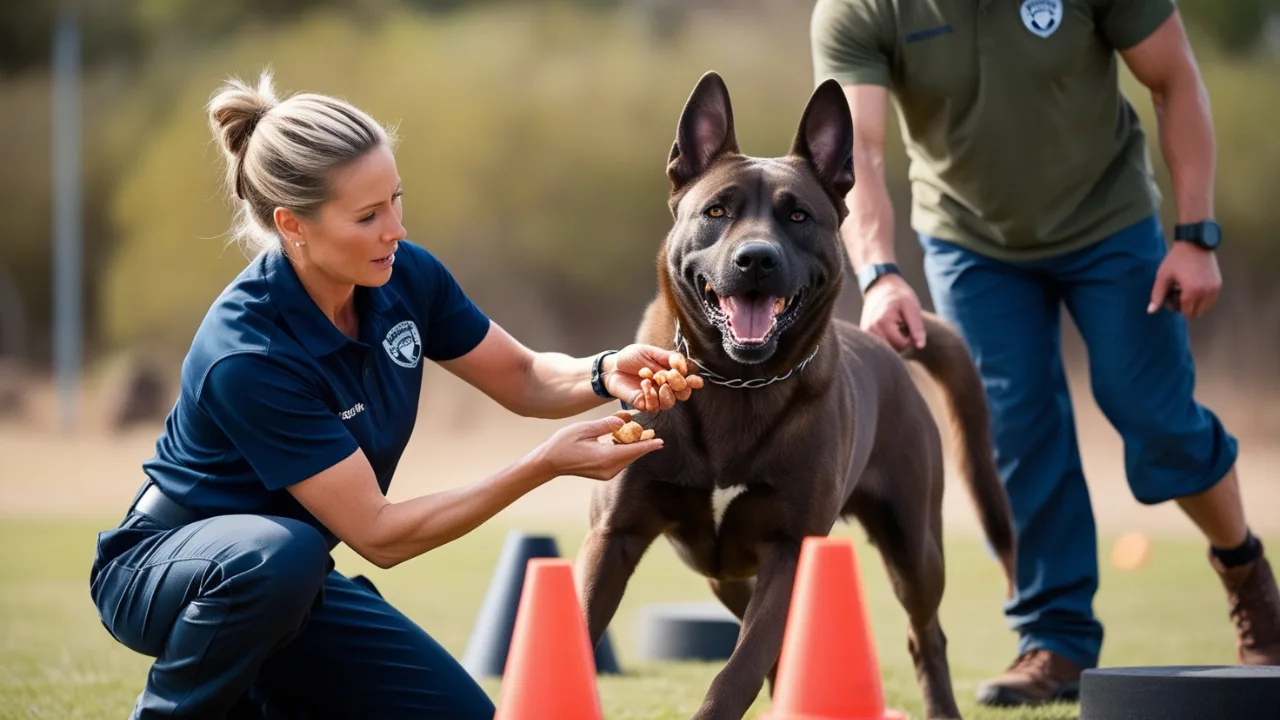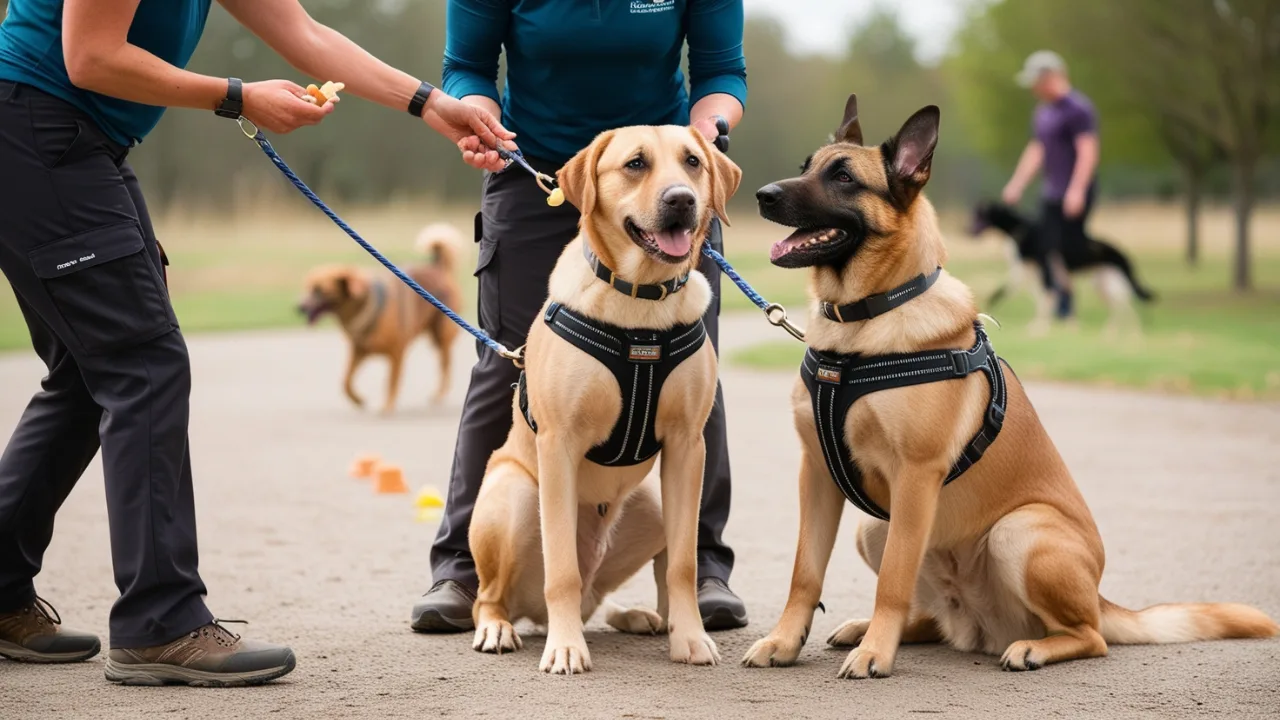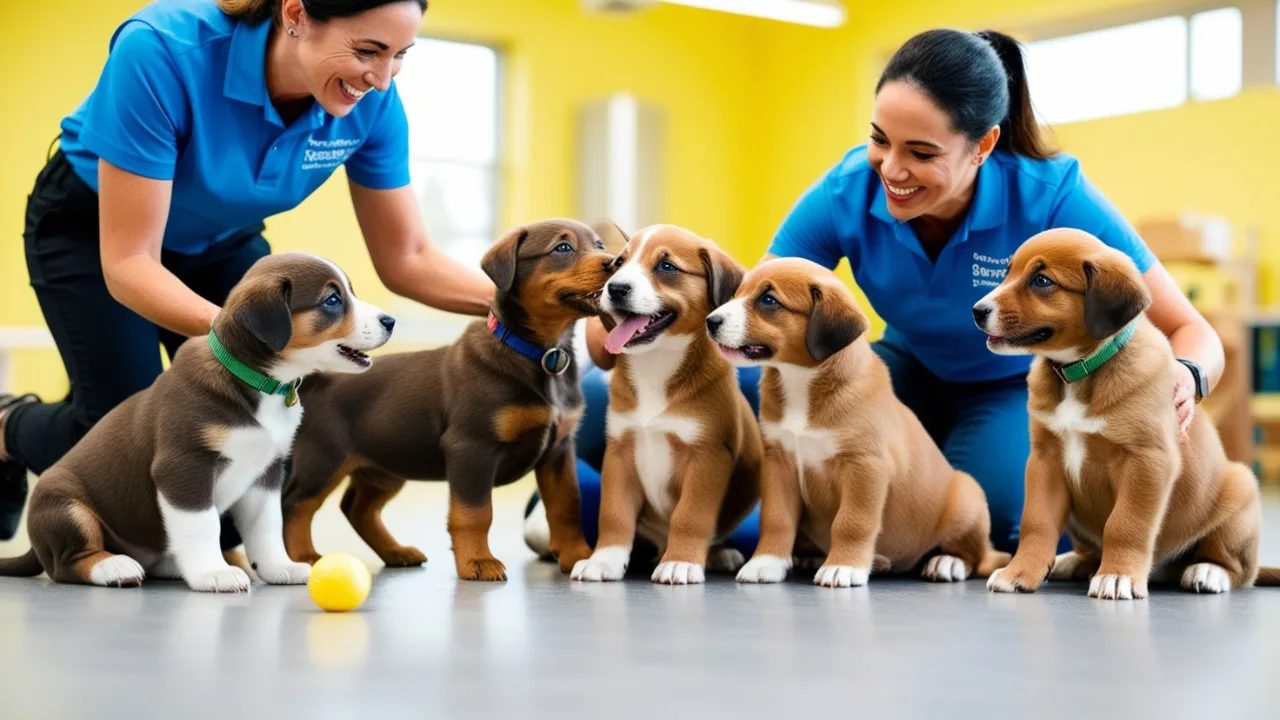Protection Dog Training. The activity of teaching your dog protection involves ensuring that your family, compound and property are safe. Having a protection dog for protection is not just getting a company; they’re well trained, watchful, and able to respond quickly to a threat.
There’s also a problem of training your dog and ensuring that it behaves in the manner you want it to through the right balance of aggression and control.
In this article, I will explain the process and what you need to know for successful protection dog training. Before you think about professional help or prefer self-training, it is necessary to know the basics to develop a sound and invulnerable connection with your dog.
Key Takeaways
- Protective dog training is a good investment because it means a guarantee of your family’s security.
- Elite guard dogs work effectively while not becoming violent to the situation or the targeted individuals.
- Several aspects into consideration when training are consistency and positive reinforcement.
- This means that professional trainers should be of assistance in handling complicated protection behaviours.
- It may not be necessary to take your protection dog out for further training and socialisation at all times; however, it is necessary to be certain that your protection dog remains receptive and ready to work at any time when required.
What is Protection Dog Training?
Personal protection dog training is a subcategory of dog training centred on training dogs to guard people and items. Unlike attack dogs that go for an aggressive approach, protection dogs only react cautiously, only if provoked or threatened.
Definition and Purpose
Key Traits of a Protection Dog
Protection dogs share certain characteristics that make them well-suited for this type of training:
- Alertness: Protection dogs are great observers of the environment and an authority on quick identification of threats.
- Confidence: A good protection dog must lack fear and hesitation at the same time, particularly when in stressful circumstances.
- Intelligence: The AcRotate breed of dogs is intelligent dogs that can grasp everything that is taught to them, and they are fairly easy to train.
Why Consider Protection Dog Training?
Perhaps, you are a resident of one of the dangerous districts, or perhaps, you wish to have your family feel even more protected.
Personal and Family Security
A protection dog aimed at reacting to threats which could be a stranger, an attacker or anybody who wants to harm both you and your family. Besides that, every person wants to protect their family, and having a protection dog by your side means that your family will be safe even if people will not be able to react in time.
Peace of Mind
A protection dog going through intensive training prevents your mind from sharing because your family as well as your home is at risk of security even when you are not in the house. Protection dogs can prevent criminals by just their visibility as this often scares away a potential attacker.
Types of Protection Dog Training
Basic Obedience Training as a Foundation
However, to undertake protection work, one requires certain levels of basic obedience to be met. This enables your dog to be well-mannered as well as obedient to your commands. Basic obedience includes:
- Sit
- Stay
- Recall (come when called)
- Heel (walking being by your side without pulling you in any direction)
This means that for you to train your dog for protection work, you’ll be starting from a much lower level than you should due to the ack of obedience lessons.
Advanced Protection Training
Once basic obedience is mastered, your dog can begin more advanced protection training, which includes:
- Bite Work: Teaching the dog to bite on command as a form of defence mechanism.
- Threat Detection: The offence of tailoring the dog to distinguish them and act according to threats.
- Controlled Aggression: The ability to put aggression to the case teaching the dog to only be active when necessary.
Off-Leash Protection Training
As with virtually all real-life situations, the protection dog is to be trained for off-leash activities. Off-leash training also enables your pet to counter menacing situations without the propeller of the leash. This is particularly useful when you want to control your dog’s movements promptly and without undue hindrance in special circumstances.
Professional Training vs. Self-Training
The same goes for protection dog training: you can either hire a specialist or try to train your dog on your own. Each has its advantages and disadvantages.
When to Seek Professional Training
First-timers in protection dog training are advised to hire professional trainers as the process is highly advantageous.
In contrast, on a personal basis, an individual may lack essential experience, skills, and understanding of various aspects of dogs’ behaviour and, consequently, teach controlled aggression and bite work.
They also understand how to evaluate if, for instance, your dog is fit for the protection training.
Pros and Cons of Self-Training
The Steps Involved in Protection Dog Training
Training a protection dog is a process that takes time and dedication. Here are the key steps involved in the training process:
Getting Started with Protection Dog Training
Choose the Right Dog for Protection Training
Not all the dogs you may work with in capacity are good candidates for protection training. While many breeds can excel in protection work, the best protection dogs are typically:
- German Shepherds
- Belgian Malinois
- Rottweilers
They have all the inherent intelligence, muscling, and inherent guarding disposition that is necessary to perform protection duties. These are some of the factors to consider when choosing a dog, however, there’s more that including temperament and energy.
Setting Clear Goals for Your Dog’s Training
It would help set realistic goals before you start your training session. Would you like your dog to guard the house? Or do you want them to watch over you in social places? Setting up for a particular area of concern will assist in steering the training procedure.
Training Techniques to Use
Positive Reinforcement
Rewarding is among the most useful methods of positive reinforcement for the training of protection dogs. The use of treats, praising or play to reinforce good behaviour predisposes the dog to make the same behaviour every time again. It is useful in training as it establishes trust and your dog will always link protection work to something positive.
Consistency is Key
Consistency is particularly important in training. Pest training sessions are perhaps best conducted on a daily or every other day basis since repetition is important in setting behaviour. Always apply the same command, incentives, and Sequence in teaching your pet new tricks.
Advanced Training Techniques
Bite Work and Controlled Aggression
Building Confidence and Trust
Happiness with corrections and reward schemes will depend on the rapport between you and the dog. Follow the time-tested practice of investing time to ensure the development of trust by offering positive experiences and incentives. However, when your dog becomes more confident in your leadership the response to protection commands will be perfect.
Common Mistakes in Protection Dog Training
If you are training your protection dog, some mistakes must be avoided if the training is to be efficient.
What to Avoid
Overusing Aggression
Protection dogs should not be extremely aggressive. Protection training should teach a dog when to respond, but the dog in question shouldn’t be overly aggressive even during such classes. Do not train for aggression too much, you can create a very dangerous dog this way.
Lack of Socialization
Socialization helps in making sure that the protection dog is well trained as well as an all-round. Socialization of the dog is very important to avoid the development of fear-induced aggression.” An ideal protection dog should be in a position to discern rightful threats about the person or property it is guarding from fake threats.
Maintenance and Ongoing Training
The training of becoming a protection dog does not stop the moment that the dog is already trained. The constant practice is required to preserve those skills.
The Importance of Continuous Training
As it has been pointed out, a protection dog will require constant training to maintain his protection level at optimum. Therefore, some of the activities that would be considered include touching up the obedience commands, bite works as well as presenting the dogs with new problems to solve.
Keeping Your Dog Sharp
Ongoing Socialization
Protection dogs should be well-socialized so that they can’t easily overreact big timeregardingo people or places that they encounter. Now and then take your dog out of its environment so that it doesn’t become used to its environment and become so protective or start developing fear.
Costs of Protection Dog Training
What Does Protection Dog Training Cost?
Nevertheless, the cost of protection dog training is an important matter to discuss being a vital factor when choosing training for your future protection dog.
Training therefore has various costs; either one has to go for professional training or take the option of self-training. Professional protection dog training costs vary between $2,000 to $10,000 for the span of training depending on the intensity of the training.
Initial Training Costs
Obedience is usually the first course to undertake, with basic protection following it, which may take from several weeks to a few months.
Ongoing Training and Maintenance
To have your dog continue to be protected, you will need to go for more practice in different classes. This may range from $500 to $2000 per annum depending on the trainer besides the frequency of the training sessions.













Leave a Reply
View Comments